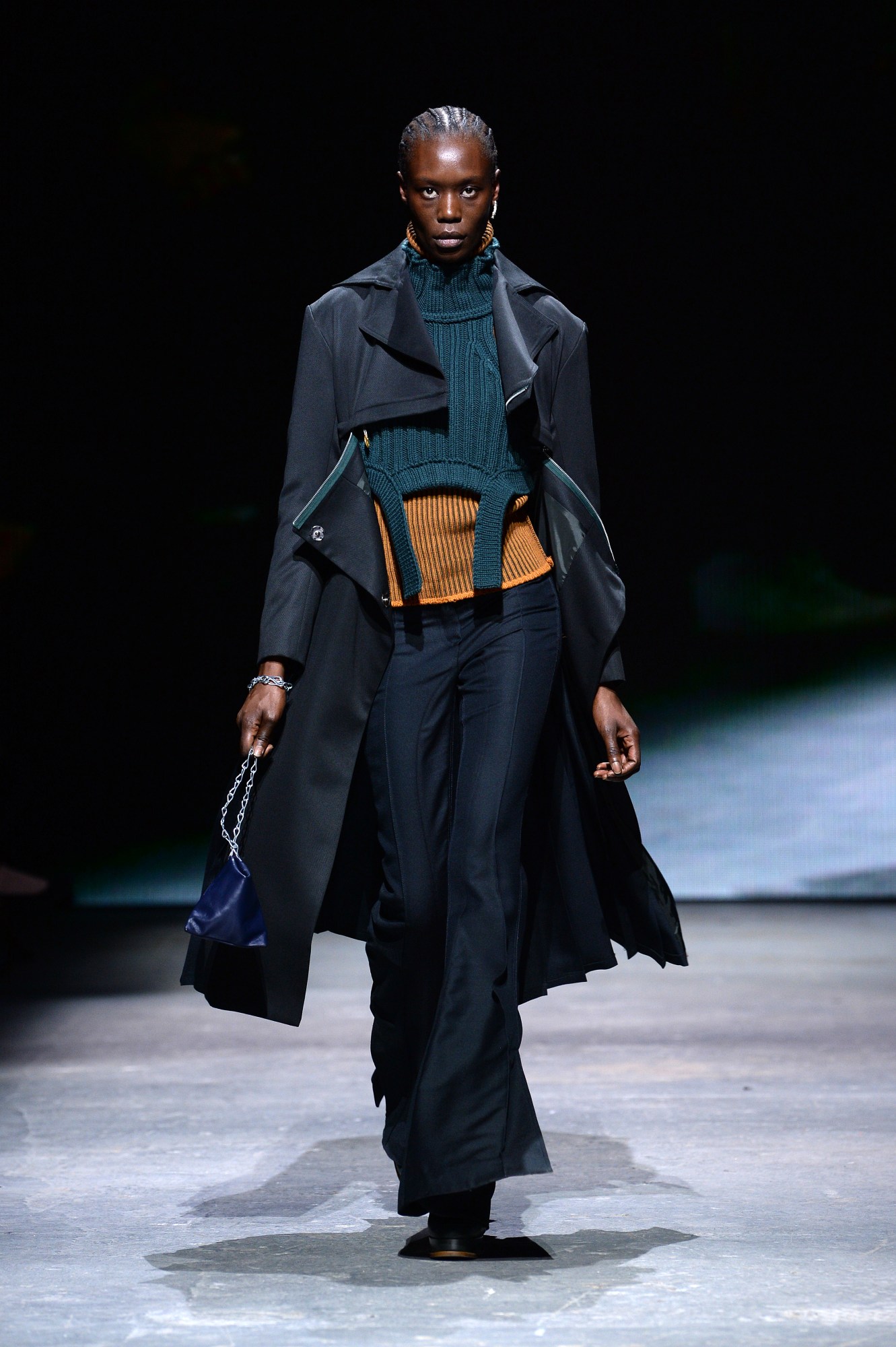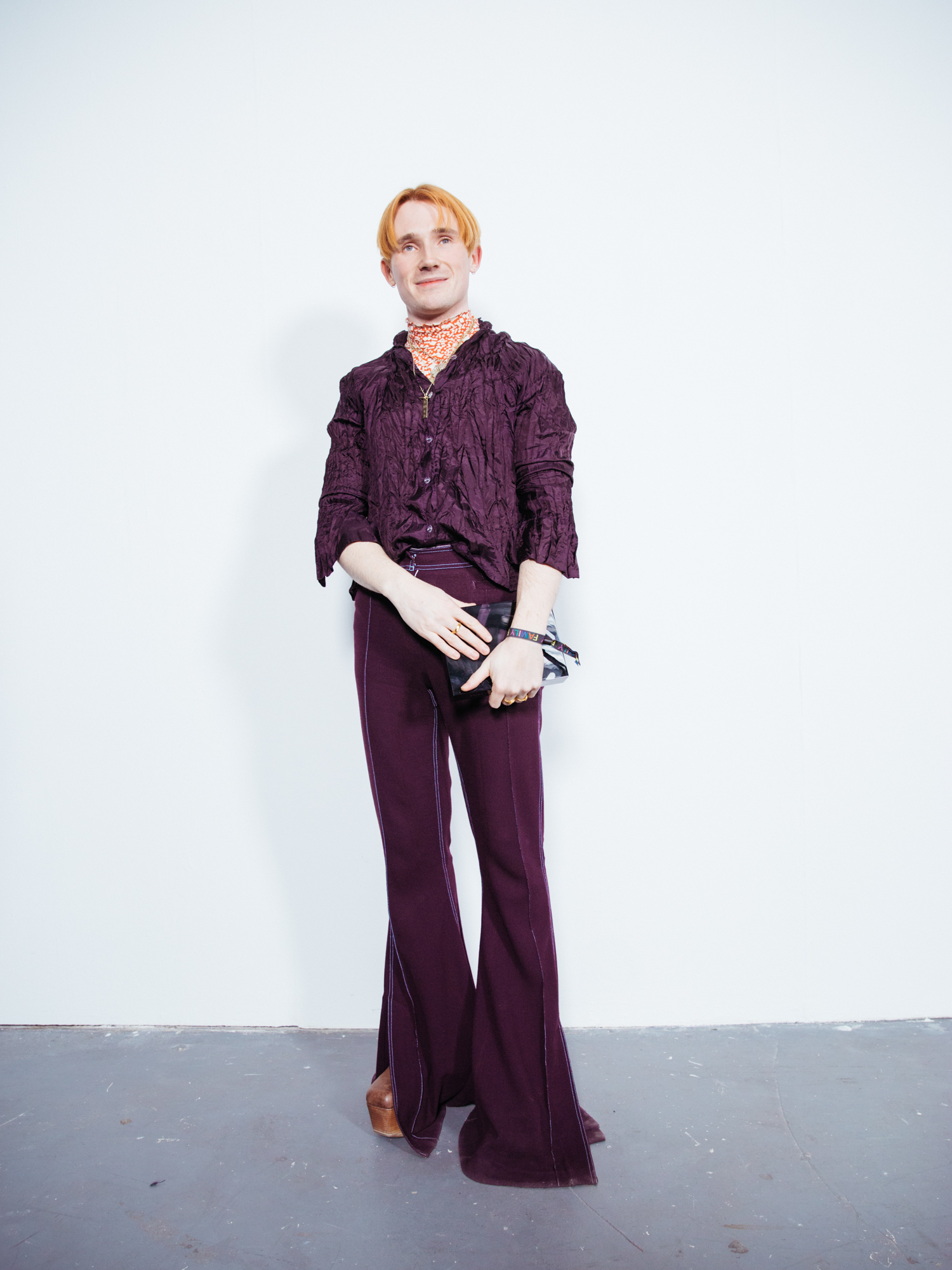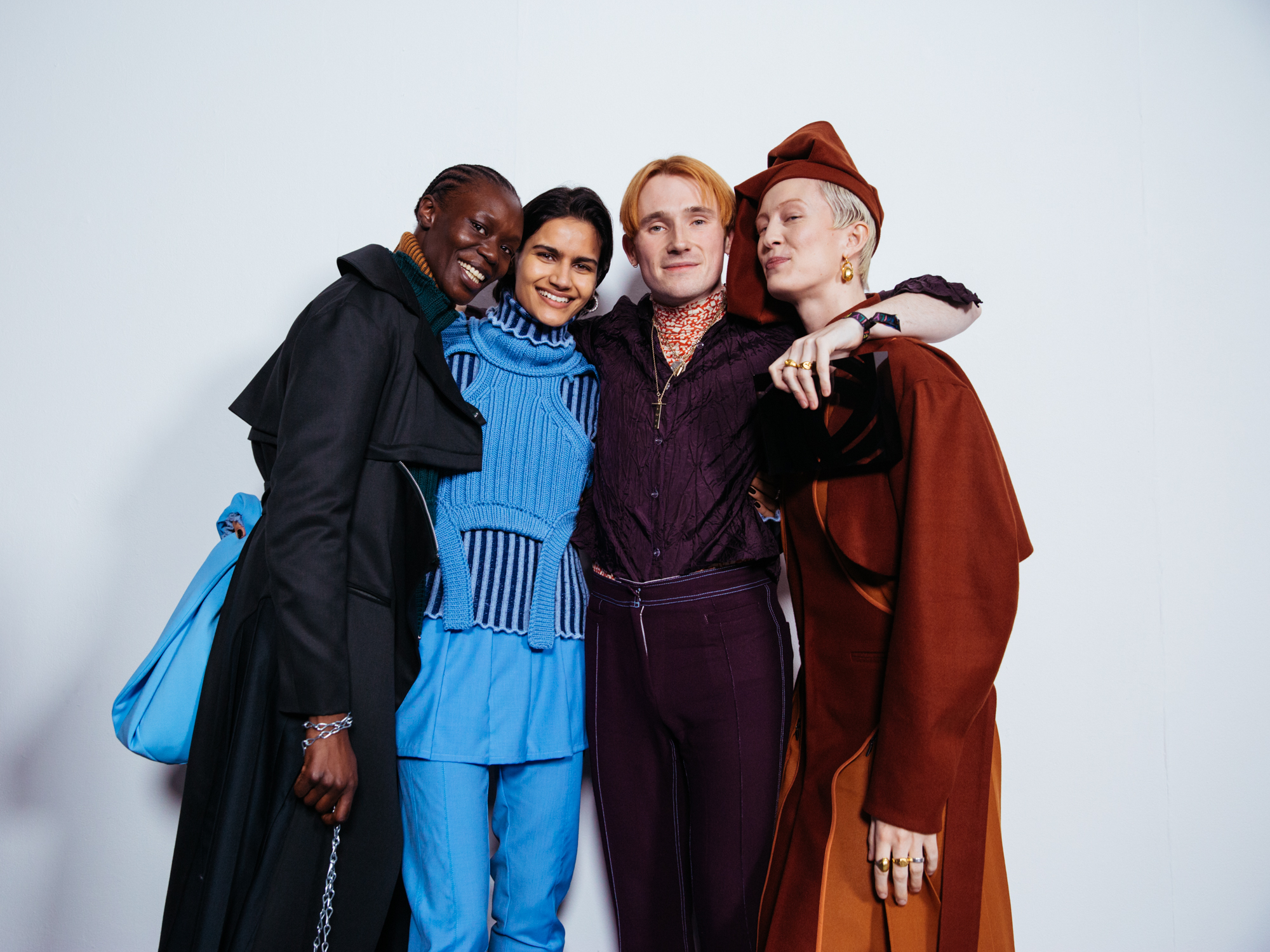Since its inauguration in 1954, the International Woolmark Prize has established itself among the most prestigious awards for young fashion designers. Last night saw the competition’s finale, with eight designers in the running for a main prize of AU$200,000 and the Karl Lagerfeld Prize for Innovation (which comes with a cash award of AU$ 100,000).
The jury’s task of settling on the deserving winners of such game-changing rewards was, in certain respects, an unenviable one, given the calibre of talent on show — the final shortlist included A-Cold-Wall, Blindness, Bode, Botter, Feng Chen Wang, GmbH, Ludovic de Saint Sernin, Matthew Adams Dolan, Namacheko and Richard Malone. Each of their capsule collections exhibited a fresh, innovative take on the versatile potential of merino wool.
More than simply impressing with their aesthetic and technical skill, however, designers were required to demonstrate how policies of sustainability and traceability inform their practice, and how such policies would be developed if they were to win. This year’s mission statement was of particular importance to the Woolmark Company, whose native Australia has been ravaged by ferocious bushfires over the past months, and subject to some of the worst droughts on record.

With these criteria in mind, two young brands stood out in particular: New York’s Bode, taking home the Karl Lagerfeld Prize, and the grand prize awardee, London’s Richard Malone. Fresh from showing his AW20 collection just days before, Richard presented The Lifecycler, a capsule collection that drew upon the codes of functional garments — aprons or work trousers, for example — reinterpreted through his trademark intelligent cutting. Crafted from “handwoven, traditional fabrics with organic and azo-free dyes,” each piece can be recycled through a Fibreshed (a regional fibre system that builds soil) back into the earth — after many years of loving wear and repair, of course.
To toast Richard’s success, and learn just what about his work caught the panel’s eye, we sat him down with pioneering visual artist and IWP jury member Takashi Murakami. Here, the pair discuss the relationship between fashion and farming, and what the future of sustainable fashion could be.

Takashi Murakami: First of all, congratulations! How does it feel to have won?
Richard Malone: So surprised! I thought that someone would let us know further in advance, so I was at the water cooler when they announced it, and had to sprint back to collect the award.
Well, when I saw you earlier in the day, I wanted to say congratulations, but had to hide my face so as not to give it away. The judging process was very interesting, as the finalists were all so strong, and there were so many things that we really loved in all your work. But ultimately, the main conversation was around what sustainable fashion is and can be — which is where you really stood out. Your name was immediately mentioned among the panel members as a designer with a really deep understanding of sustainability, and that it’s been a core part of your brand since the beginning.
I guess you could say that! Glad that you noticed.

And when I was talking with you, I remember you saying that using fabrics woven from fibres from protected farms was an important part of your presentation. It reminded me of a friend of mine who’s a coffee roaster. He often travels to Colombia and other countries where coffee’s grown, and was speaking about the importance of the quality of soil. Speaking to you really reminded me of that approach, thinking about clothing as something that’s a true product of the earth.
I’m very sensitive to the environment and I’m from a farming background, so I have an understanding and appreciation for farming. I then worked in luxury fashion in Paris for a while, but felt quite uncomfortable being part of that side of the industry. In my own work, I’ve been working sustainably since the very beginning, so the International Woolmark Prize was an amazing opportunity to work with a fibre that’s fully traceable, where everyone in the supply chain can be accounted for. It’s also such an old fashioned way of working — we’re dyeing with plants and working towards biodegradable garments, but these things aren’t new.
Working with the woolgrowers was especially humbling, as this year’s been crazy for them in Australia with the tragic bushfires. And then there are our weavers in India and everyone else involved — we collaborated like a family. I might be the designer, but they’re really the experts.
Yes, treating the people you work with in a sustainable manner is also so important. Winning the prize could be the catalyst of your brand’s big success, but expanding the size of your business while trying to keep it sustainable can be a challenge. It’s something I’ve experienced, taking on more employees and working with bigger factories. Maintaining integrity where the sustainability of your product is one thing, but making sure that everyone in your supply chain is being treated ethically is just as key. But that’s sometimes easier said than done. Do you have any ideas about how you’ll approach these challenges?
Yeah, I think it’s really important to meet and get to know everyone that I work with face-to-face, and understand what everyone’s expertise is. For me, it’s about cutting and designing and colour coordinating, but I also want to open it up so that other brands and designers can come in and look at our research.
We don’t need to hide what we learn along the way, or keep it to ourselves. And fashion doesn’t need to be bought to be appreciated; some people don’t necessarily want to buy new clothes, so perhaps they can come and understand how you can recycle something. As an artist, it must be the same for you, where you get so much value from the process of making the work, learning something new and sharing the result. I think that’s just as vital to everyone in the supply chain — it’s not like I’m up here and they’re below me, everyone’s on the same level.

It’s clear that you create with the future in mind, which is something the Woolmark Prize has always rewarded. But the most important thing about creativity isn’t necessarily visual. I think that when the jury was looking at your work, it was clear that there were so many possibilities as to where your work could go — I think anyone can see your brightness, and that brightness is what guided our point of view. You’re shining, Richard!
Oh, thank you! Who knows what the future has in store, but I think what our proposition can contribute to it is a way of using fashion to actively regenerate our environment. Just making more “sustainable” clothing isn’t really an efficient way to do that. We have to do something that gives back, which I think was a real point of difference for us. We need to develop ways of working that actually regenerates the land and undoes some of the destruction that fashion’s caused. It’s a really radical idea, but it’s vital, and I’m so grateful that you, the jury and the Woolmark company have recognised that.

Credits
Images courtesy of the International Woolmark Prize

